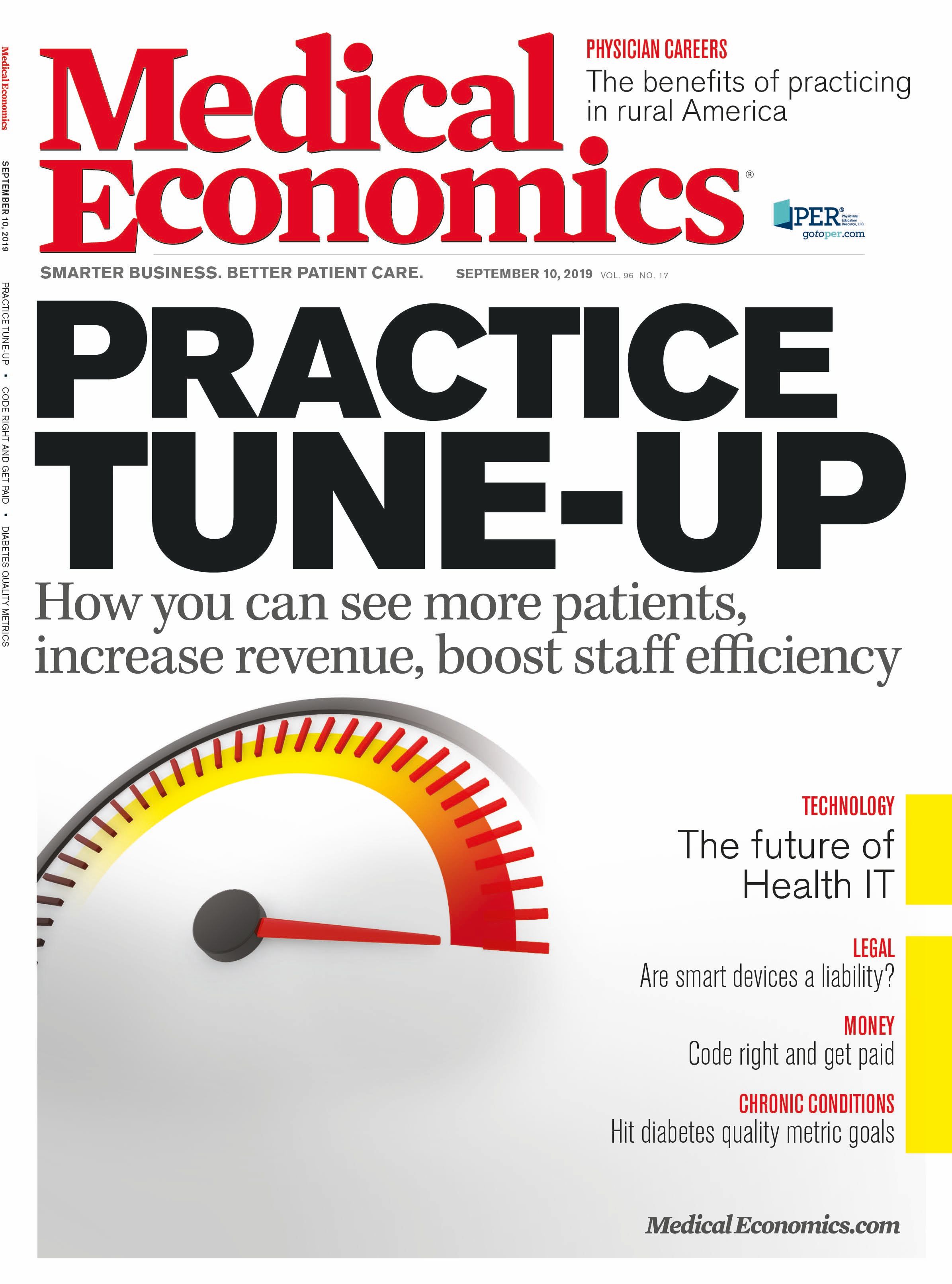Publication
Article
Medical Economics Journal
Dealing with the shortage of rural physicians
Author(s):
How can the healthcare industry better encourage doctors to practice in rural settings?

Natalie King, MD, a family medicine practitioner, trained in Toledo, Ohio, an inner-city environment less than two hours away from the family farm where she grew up. That residency training prepared her to work in under-resourced urban areas. But when she was offered a job at a community health clinic in Jellico, Tennessee-population 2,217-she didn’t hesitate.
“Having grown up in a rural setting, moving to a small town didn’t faze me,” she explains. “As a physician, I was inspired to find ways to engage with more vulnerable populations. And practicing full secondary family medicine, where I could provide real care continuity for my patients, was something I wanted to do.”
Yet, after four years in Jellico, King decided to return to Toledo.
“There are so many different challenges involved with practicing in a rural setting, from lack of insurance to just the distance a patient has to travel to get care,” she says. “I found the work really satisfying, but it was hard, as a single woman, to live in the middle of nowhere. When the hospital where I worked changed hands, and they closed down the obstetrics department, it changed the dynamic for me and I decided to head back north.”
A Shortage of Doctors
According to the Centers for Disease Control and Prevention (CDC), more than 46 million Americans, about 15 percent of the entire U.S. population, live in sparsely populated areas with low housing density, often hours from urban centers. Numerous studies have demonstrated a significant gap in health outcomes between individuals who reside in urban areas and those in rural ones.
“Generally, people who live in rural America are sicker, older, and come from a lower socioeconomic level,” says David Schmitz, MD, chair of the Department of Family and Community Medicine at the University of North Dakota and past president of the National Rural Health Association. “They are less well insured and tend to suffer from a lot of chronic diseases. And, by nature of where they are, it’s often difficult for them to access healthcare, even basic primary care.”
While primary care physicians are in short supply everywhere in the country, the lack of providers in rural settings is more acute. The Health Resources and Services Administration has designated 7,200 regions across the country as Health Professional Shortage Areas. Nearly 60 percent of those shortage areas are located in rural regions. Because healthcare access is widely recognized as a key determinant of health outcomes, these statistics highlight a large and growing issue.
“Provider shortages, like those seen in rural regions in both the U.S. and Australia, are associated with delayed healthcare seeking, reduced continuity of care, increased travel burdens, higher healthcare costs, poorer prognoses, and poorer adherence to care plans,” says Matthew McGrail, Ph.D., a member of the Rural Clinical School at the University of Queensland in Australia.
Yet the very factors that tend to make rural patients sicker are also those that make it difficult to recruit and retain healthcare providers for those areas, says Amitabh Chandra, director of health policy research at Harvard University’s John F. Kennedy School of Government.
“There are likely a lack of jobs in many of these places, as well as lower quality schools and housing,” he says. “Doctors know better than anyone the importance of good healthcare to a thriving community. Will they be comfortable moving to an area, and raising a family, in a place where you can’t get great hospital care-or perhaps any hospital care at all within a hundred miles?”
Embracing a Rural Practice
The lack of primary care physicians in rural areas has led the healthcare industry to consider what can be done to better encourage doctors to practice outside of metropolitan areas. While the most straightforward approach may seem like finding ways to make it more lucrative for physicians to practice in a rural area, Chandra says simply throwing money at the problem is not the answer.
“The amount of money that you’d need to try and make up for what these doctors could make in the city would be cost-prohibitive,” he explains. “We aren’t talking about the state or other agencies adding 5 percent in extra wages but more like 40, 50, maybe even 60 percent to make up the difference. Instead of focusing on salary, we need to think more creatively about how we can make rural America more attractive to doctors and their families.”
That said, investments in training and recruitment may bring more progress in addressing the rural physician shortage. Relying on physician assistants and nurse practitioners to do more primary care could help fill some gaps, but even so, the need will remain for physicians to help oversee their work and deal with more complex patient cases.
Shannon Brownlee, MSc, senior vice president of the Lown Institute, a non-profit organization working to create a more equitable healthcare system, says that in an age of mergers and acquisitions, she would like to see more health systems making greater investments in their rural facilities.
Rural hospitals are reducing their services, even shutting down completely, at an unprecedented rate. Such changes were part of the reason why King decided to move back to Toledo.
Beyond investing in those facilities, Brownlee says subsidizing medical school for those willing to go into primary care and practice in rural areas could also be beneficial.
“Some countries in Europe have invested in primary care education because they see physicians as public servants that offer a common good to society,” she says. “We already pay for residency training in the United States. What if we also paid for basic medical education and primary care training for doctors who are willing to stay in the field and work in areas with primary care shortages?”
King, having grown up in a rural area herself, believes that targeted recruitment programs that reach out to students in rural areas as early as high school, should also be considered. Brownlee agrees.
“Some people who live in these communities are just looking for a way out. But many are looking for ways to stay and serve,” she says. “We can put forth a concerted effort to recruit people from these underserved areas and show them that a career in medicine is not only possible but possible to pursue in their hometowns.”
Changes to medical education are also important. The addition of rural residency programs, where doctors can be trained in rural hospitals or other rural care settings, should be a vital part of this effort, says Schmitz. Doctors who train in these resource-limited environments can gain both the competence and confidence to thrive in a rural environment, making it much more likely that they’ll stay after they complete their programs.
“People go to medical school for all kinds of different reasons,” he says. “But if the reason is to make a real difference, there are very few opportunities that offer as many ways to make a real difference as rural medicine. You just won’t know that until you actually practice it.”
Finally, Chandra says, there is an opportunity for telehealth technologies to provide additional support and expand healthcare access for underserved rural communities, at least for diagnostic purposes.
“In terms of providing better care to communities, telemedicine is a great idea,” he says. “You can connect someone who lives in rural Maine to one of the best physicians in Boston for evaluation. But, unfortunately, no matter how good a telehealth technology is, it’s just not going to be a solution if a patient needs a basic procedure or hospital care.”
King says telehealth does offer much-needed support for physicians, allowing those who work in rural areas to consult with specialists when needed. But given that access to high-speed internet-and sometimes any internet-can often be spotty in many remote regions, larger urban hospitals sending specialists to rural community health clinics to see patients on a monthly basis could be more effective.
“If we could have gotten a cardiologist to come in every month for a day to see my patients back in Jellico, it would have made a huge difference,” King says. “Something as simple as that can help us manage that distance barrier that keeps patients from getting to those specialty appointments that they so need.”
Chandra says that the rural physician shortage is a complex issue, resulting from many factors. And effectively addressing it will require a multi-pronged approach. When asked if she can see herself returning to rural practice, King says she’d be glad to. But, if she does, she believes rural Ohio, where she grew up, may be a better fit.
“Rural medicine is very rewarding,” she says. “It’s a lot of hard work, and as a provider, you are going to find yourself wearing many hats, but it feels like you are doing something really meaningful. I wish more people could see that.”
Chandra says that doctors, like King, who serve rural communities really are the unsung heroes of modern American medicine.
“They’re not publishing papers in the New England Journal of Medicine or developing new innovative medical devices, for the most part,” he says. “But they are providing care to patients who, historically, have been systematically underserved and, for many reasons, are really hurting. These providers are not only doctors, but they are social workers, counselors, and advocates for their patients. They do it all. We don’t praise them enough.”






